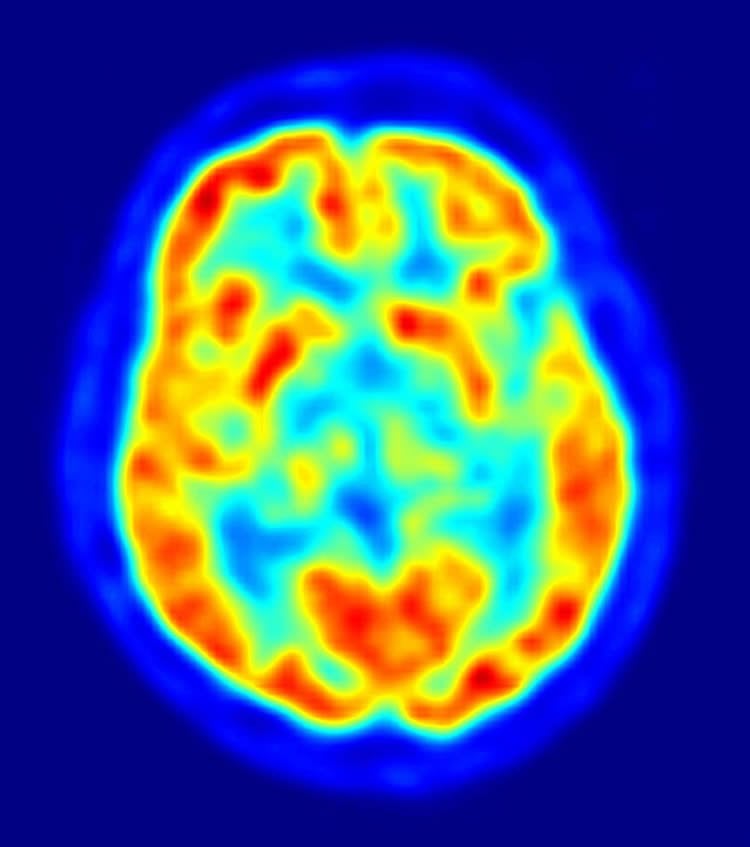New research by Physics and Astronomy professor Andrea Soddu touts the ability of PET (Positron Emission Tomography) scans to identify patients in a minimally conscious state (MCS) far more accurately than other imaging technologies.
According to his study, PET scans identified 93 per cent of people in a minimally conscious state, and that 74 per cent would recover within the next a year. The functional magnetic resonance imaging (fMRI) identified 45 and 56 per cent, respectively.
Soddu’s research, which included colleagues from Belgium and Denmark, was recently published in The Lancet.
“With the PET, if you don’t see any metabolic activity in both left and right hemisphere, but just in the cerebellum and brain stem, then you say he or she is in a vegetative state,” Soddu explained. “If you find some residual metabolic activity in one of the hemispheres, then this is a minimally conscious state patient.”
This clinical validation study included patients referred to the University Hospital of Liège, Belgium, between January 2008 and June 2012 who were diagnosed with unresponsive wakefulness syndrome, locked-in syndrome or minimally conscious state with traumatic or non-traumatic causes.

Soddu, whose research focuses on medical physics (neuroscience), said when comparing the resting brain vs. the active brain, the active brain requires more cognitive processes from the patient and, thus, is a key indicator.
“It’s only the active paradigm that can tell you if the patient is conscious,” he said. “If you find some residual activity in the brain, you cannot conclude this is sufficient for a patient to be conscious. But then, you can compare things with the behavioural evaluation and can say next time we find some residual activity, most probably, the patient is conscious.”
Diagnostic assessments are traditionally made using bedside clinical tests – but Soddu said judging the level of awareness in people with severe brain damage can be difficult for many reasons. For instance, subjects may not understand the question, they may complete the task when they’re not supposed to or, even, may not want to do the task.
“You should always go for the active paradigm. If you don’t find anything, try to see if there is some residual activity,” Soddu said. “It’s the only way to really be sure if the patient is conscious or not. The moment you don’t get any answer, don’t stop there. Keep digging.”
PET scans also distinguished brain activity in some patients who had been diagnosed as unresponsive by the standard Coma Recovery Scale test.
The bonus of using PET, Soddu continued, is when you look at the signal of the PET it’s like looking at the stars.
“When you look at the stars you are looking at the light that was emitted in the past,” he said. “It’s the same with PET. The process takes half an hour to an hour, so what you are capturing and measuring is what is happening in the brain half an hour ago.
Patients can then be injected with glucose, which is absorbed in the neurons, and anesthetized before entering the PET scanner.
“They will not move at all, but you are still recording what was happening when they were not anesthetized,” Soddu said. “You will have a signal that is very clean, with the subject not moving.”
While more accurate, the PET scans are also more invasive and expensive, with not all facilities having access to them, as opposed to fMRI machines. Soddu and colleagues are now working on being able to produce a simulated PET signal using the fMRI machine, thus allowing more access to this diagnostic tool.
Contact: Helen Connell – Western University
Source: Western University press release
Image Source: The image is credited to Jens Langner and is in the public domain
Original Research: Abstract for “Diagnostic precision of PET imaging and functional MRI in disorders of consciousness: a clinical validation study” by Johan Stender MD, Olivia Gosseries PhD, Marie-Aurélie Bruno PhD, Vanessa Charland-Verville MSc, Audrey Vanhaudenhuyse PhD, Athena Demertzi PhD, Camille Chatelle PhD, Marie Thonnard MSc, Aurore Thibaut MSc, Lizette Heine MSc, Andrea Soddu PhD, Mélanie Boly PhD, Caroline Schnakers PhD, Prof Albert Gjedde PhD, and Prof Steven Laureys PhD in The Lancet. Published online April 16 2014 doi:10.1016/S0140-6736(14)60042-8






